Text input is an age old problem for mobile devices, simply because space is at a premium. Phones that have either a physical or virtual QWERTY keyboard are becoming more prevalent as messaging and 'updating status' become more of a mainstream habit. While text correction can enhance the experience, the fundamental building block of a good messaging device is the design of its keyboard. Of course, there are still some 12-key T9 devices coming out, and there have been attempts at making pseudo-QWERTY devices (e.g. the E55), but it is fair to say that full QWERTY is on the rise.
Last year, Steve wrote about QWERTY keyboards, first taking a survey of typing speeds on wide range of devices, and then taking a more detailed look at aspects of a selected range of physical keyboards. After having reviewed a range of form factors over the past few months, it occurred to me that there is another aspect that can affect how quickly and how comfortably someone can thumb-type on a mobile QWERTY keyboard, whether it be physical or virtual. Therefore I set about collating Steve's data and my own measurements, along with contributions from Twitter users.
Any sort of typing survey like this is bound to be fairly subjective, based on users' preferences for stiff or soft keys, key travel, and how quickly they can learn where all the punctuation marks are. Also, it is hard to be scientific without having controlled conditions. Nonetheless, it is worth taking another look at this area to look for possible trends.
An aspect of mobile QWERTY keyboards not discussed before on All About Symbian is not just the width, but how elongated the keyboard is, e.g. its aspect ratio. The wider the keyboard, the more times one's hand has to flex its Thenar muscle, to extend and retract the reach of the thumb. For example, look at the keyboard of the N900, possibly one of the most elongated QWERTY keyboards in the mobile world. Potentially, the user's thumbs constantly have to reach from left to right to cover the entire keyboard. Again, this can be argued as subjective as it does depend on hand size and typing technique. However, if the next two consecutive letters to be typed are at the same end of the keyboard, I would argue it's a natural tendency to want to get both thumbs over there!
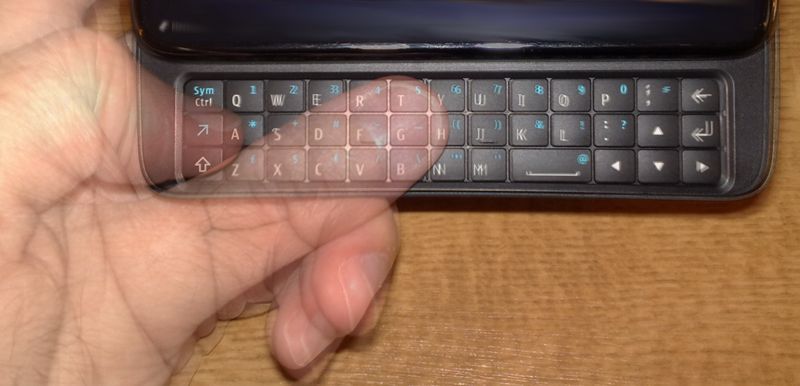
A thumb stretching to cover its half of the N900 keyboard
In contrast, consider the E72 keyboard. Not only is the keyboard smaller overall, but there are more rows and less columns. Here, not only can the thumbs stay in one place and simply rotate and flex to access keys, but, for most people, the area that each thumb can cover overlaps. This means that each thumb can cooperate more, depending on the sequence of letters to be typed.
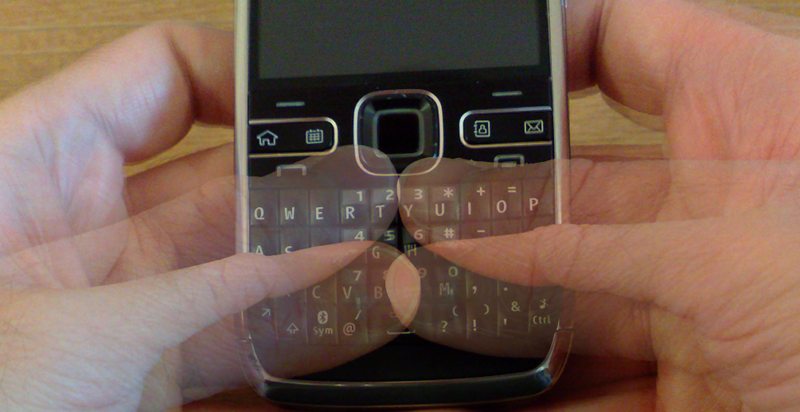
Thumbs easily covering the E72-type of keyboard
With this in mind, for each phone on which I had a words per minute measurement, I searched for photos taken with a perpendicular perspective on their keyboard. From these photos I calculated the aspect ratio of the keyboard. Shown below are the results:
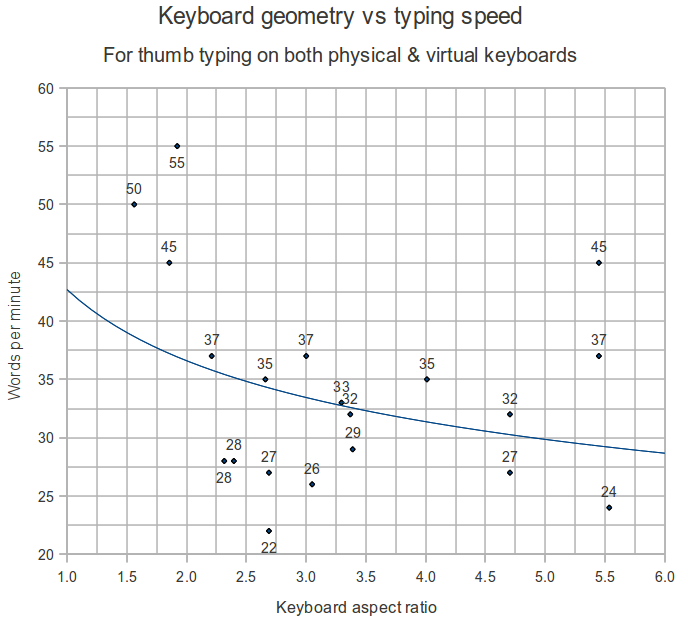
Clearly more data is needed. In fact, I invite you all to leave your phone model and typing speed in the comments so that the chart can be added to. Even though the data was not collected with the strictest scientific methods and the correlation is loose, there is a clear trend here - not withstanding an anomalous pair of points scored by the N97 mini (37wpm and 45pm). The N97 classic seems to sit happily around the trend line with typing speeds of 27wpm and 32wpm. The most miscellaneous data point is the Nokia 5730xm sitting at 35wpm with a keyboard aspect ratio of 4.0.
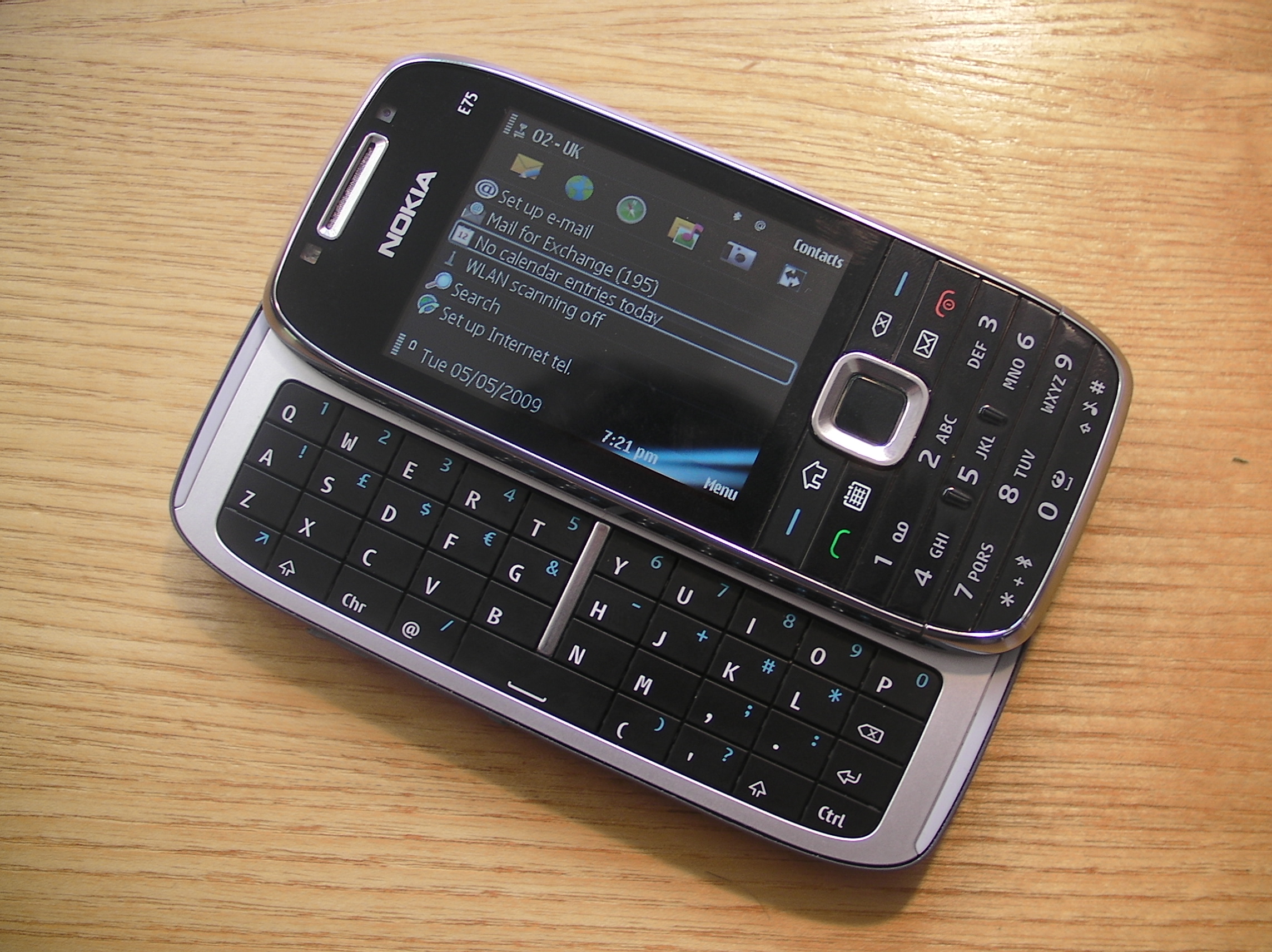
The Nokia E75 - still looking for data points on this popular QWERTY Eseries device.
Interestingly, the majority of phones clump in the 2.0 to 3.5 aspect ratio range. The phones laying above the trend in that range could perhaps be regarded as the good enough phones. The phones in question here are the HTC Touch Pro 2 (33 wpm), Nokia 9500 (37wpm), Nokia E90 (35wpm), and the T-Mobile MDA Pro (37wpm).
The phones in that range below the trend line are a mix of physical and touch screen phones. The HTC TyTN 2 (29wpm), the Nokia C6 (26wpm), the Nokia 5800 (27wpm), the iPhone (landscape, 28wpm), the Nokia E61i (28wpm), and the Nokia 5530 (22wpm).
The phones that scored the most highly were the Nokia E63 (45wpm), the iPhone (in portrait, 50wpm) and the E72 (55wpm). These phones all have the lowest aspect ratio, backing up the idea that reducing the sideways motion of the thumbs speeds up typing speeds. Correspondingly, the lowest scoring phone, also with the highest aspect ratio, was the N900 at 24wpm.
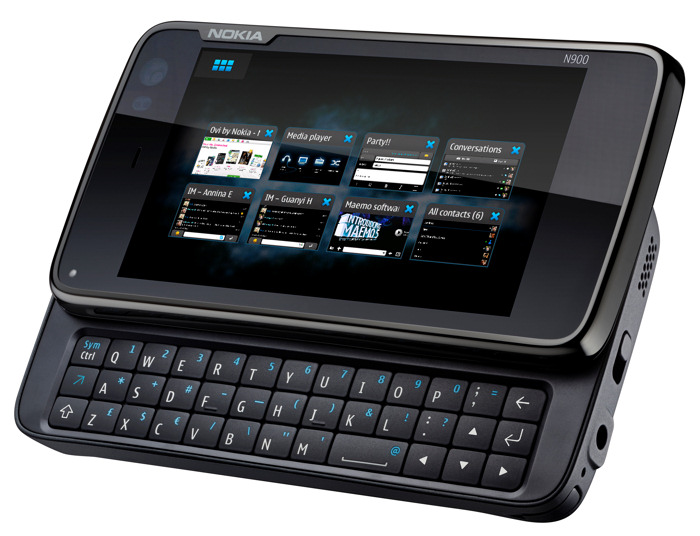
The N900 - awesome device, poor typing experience!
Again, more data points are needed, but it's clear that the amount of physical work that the user's thumbs are having to do plays a major part in the comfort of a mobile device's keyboard, and there is some evidence here to back that up.
David Gilson for All About Symbian, 4th August 2010.
